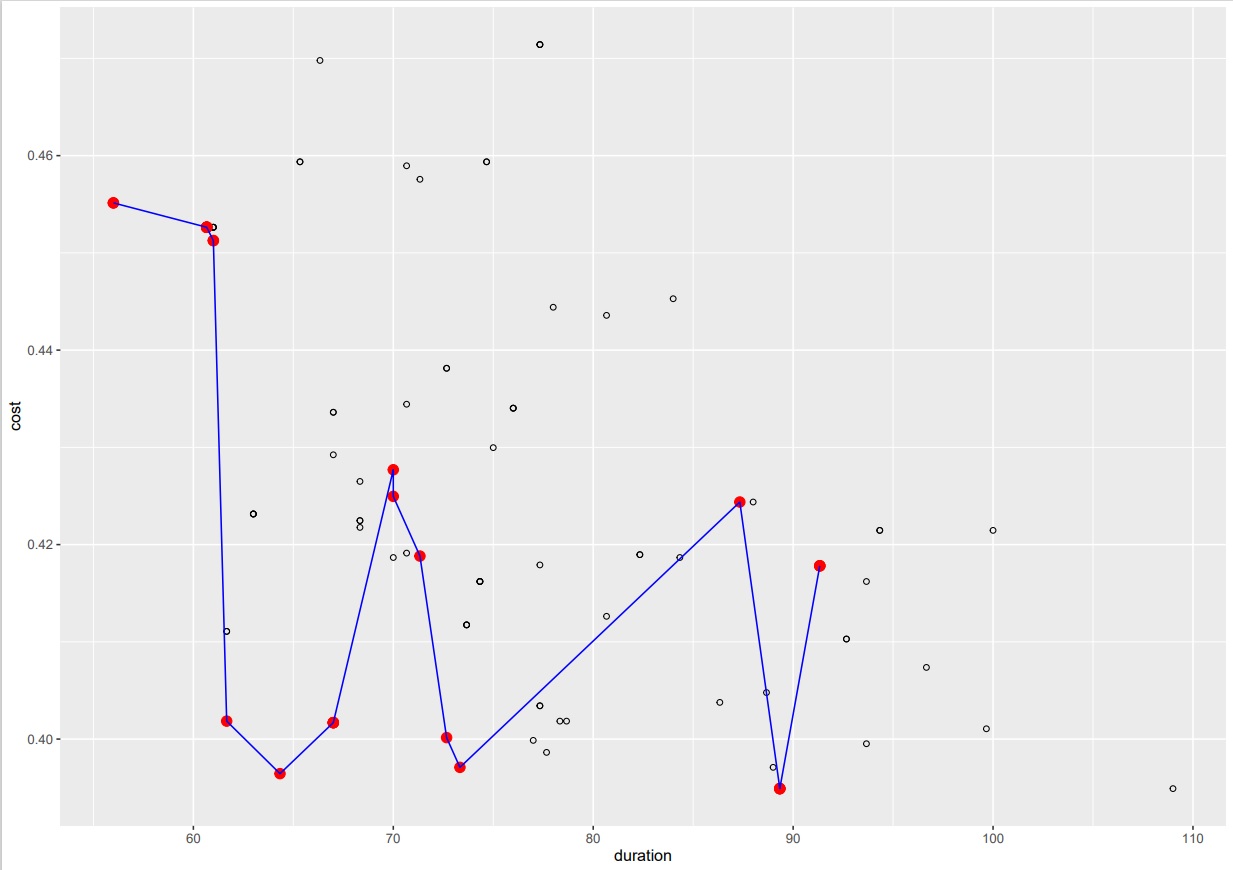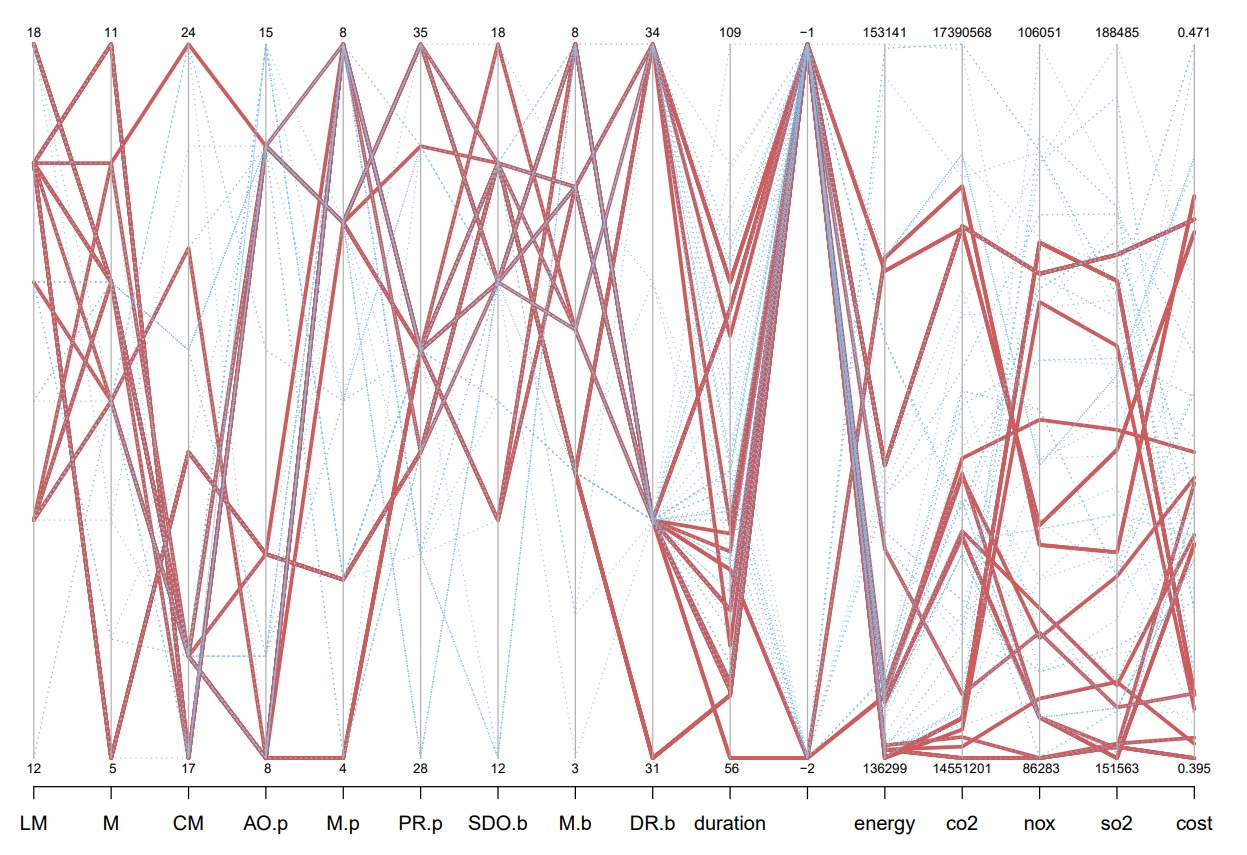In this section, a genetic algorithm is employed to optimize multiple criteria in the maintenance planning strategy for the urban system. The focus of the analysis is on three important components of the urban infrastructure: pavements, highway bridges, and earth rock dams. The aim of the optimization process is to determine the most efficient maintenance planning strategies that balance various objectives, such as cost, safety, and sustainability.
For the dam interventions
12 >= LM <=18
5 >= M <=11
17 >= CM <=24
For the pavement interventions
8 >= AO.p <=15
3 >= M.p <=8
28 >= PR.p <=35
For the highway bridge interventions
12 >= SDO.b <=18
3 >= M.b <=8
28 >= PR.p <=35
In this analysis, several variables will vary within a specified range to reflect the different intervention strategies. These variables include the width of the dam core, the pavement width, and the bridge deck depth. The varying values of these variables will be used to calculate key metrics, such as the total duration of interventions, the minimum distance between two interventions, as well as various environmental impacts such as energy consumption, CO2 emissions, NOx emissions, SO2 emissions, and costs.
In this analysis, several variables will vary within a specified range to reflect the different intervention strategies. These variables include the width of the dam core, the pavement width, and the bridge deck depth. The varying values of these variables will be used to calculate key metrics, such as the total duration of interventions, the minimum distance between two interventions, as well as various environmental impacts such as energy consumption, CO2 emissions, NOx emissions, SO2 emissions, and costs.
The Pareto front in multi-objective optimization refers to a set of solutions that are considered to be efficient. This concept is commonly used in engineering and enables decision-makers to focus on a limited set of choices that are considered to be the most efficient, allowing them to make trade-offs within this set instead of considering all possible options for every parameter. The Pareto front in decision-making guides the selection of efficient solutions by restricting attention to the set of efficient choices and making trade-offs. It helps compare solutions to determine the best balance of objectives, such as cost, time, quality, and sustainability.
The Pareto Frontier plot displays the best options for balancing duration and cost. The blue line separates the more ideal options above it from the rest. The options above the line represent the most desirable choices in terms of both duration and cost.
The utilization of a multi-Pareto approach is highly advantageous in decision-making as it takes into account the collective impact of multiple input parameters on the performance criteria. The red lines in the representation depict the optimal solutions found on the Pareto front, while the blue lines signify the non-optimal solutions.
1. Integration context of the civil systems
2. Integrated Maintenance Planning
3. Life Cycle Inventory and Analysis

